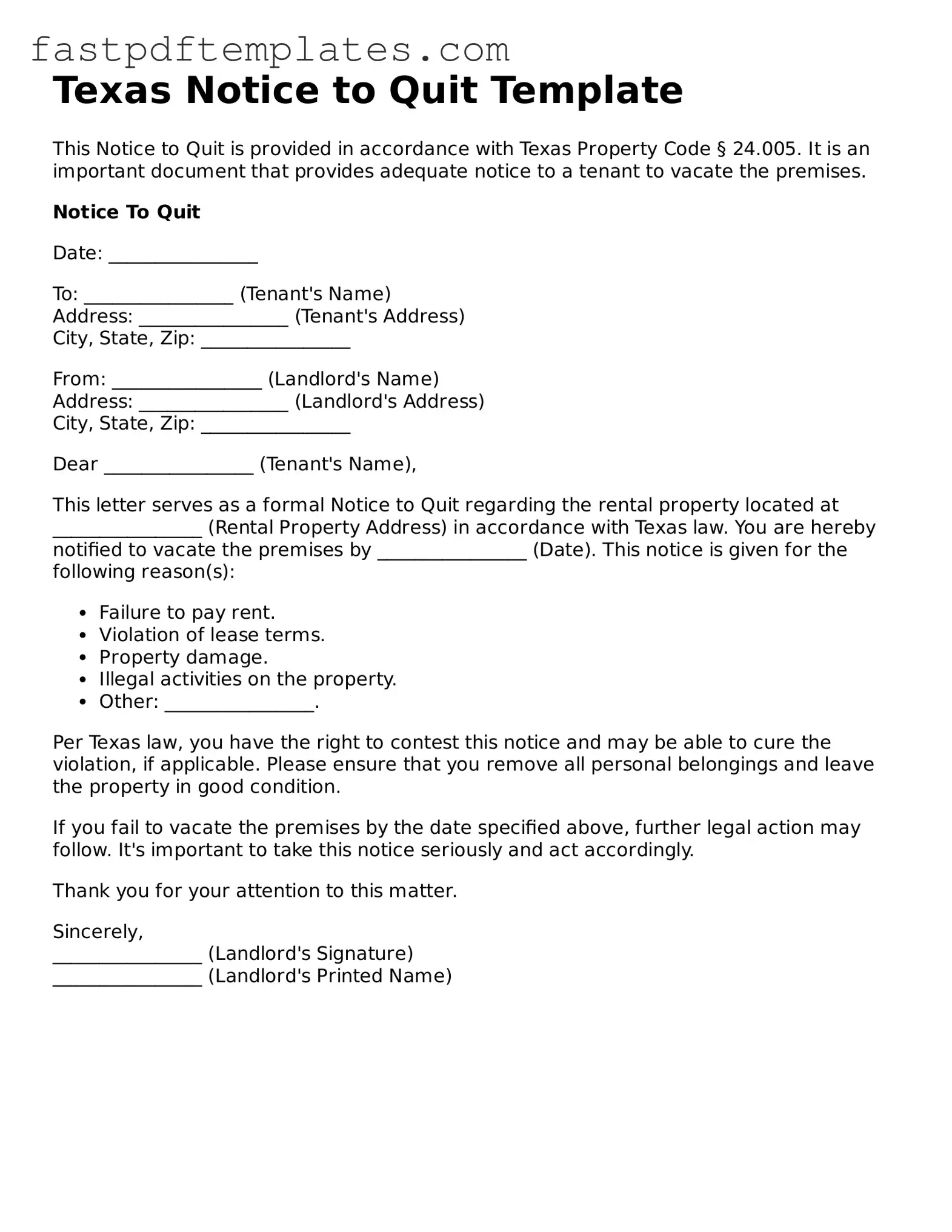Texas Notice to Quit Template
This Notice to Quit is provided in accordance with Texas Property Code § 24.005. It is an important document that provides adequate notice to a tenant to vacate the premises.
Notice To Quit
Date: ________________
To: ________________ (Tenant's Name)
Address: ________________ (Tenant's Address)
City, State, Zip: ________________
From: ________________ (Landlord's Name)
Address: ________________ (Landlord's Address)
City, State, Zip: ________________
Dear ________________ (Tenant's Name),
This letter serves as a formal Notice to Quit regarding the rental property located at ________________ (Rental Property Address) in accordance with Texas law. You are hereby notified to vacate the premises by ________________ (Date). This notice is given for the following reason(s):
- Failure to pay rent.
- Violation of lease terms.
- Property damage.
- Illegal activities on the property.
- Other: ________________.
Per Texas law, you have the right to contest this notice and may be able to cure the violation, if applicable. Please ensure that you remove all personal belongings and leave the property in good condition.
If you fail to vacate the premises by the date specified above, further legal action may follow. It's important to take this notice seriously and act accordingly.
Thank you for your attention to this matter.
Sincerely,
________________ (Landlord's Signature)
________________ (Landlord's Printed Name)
